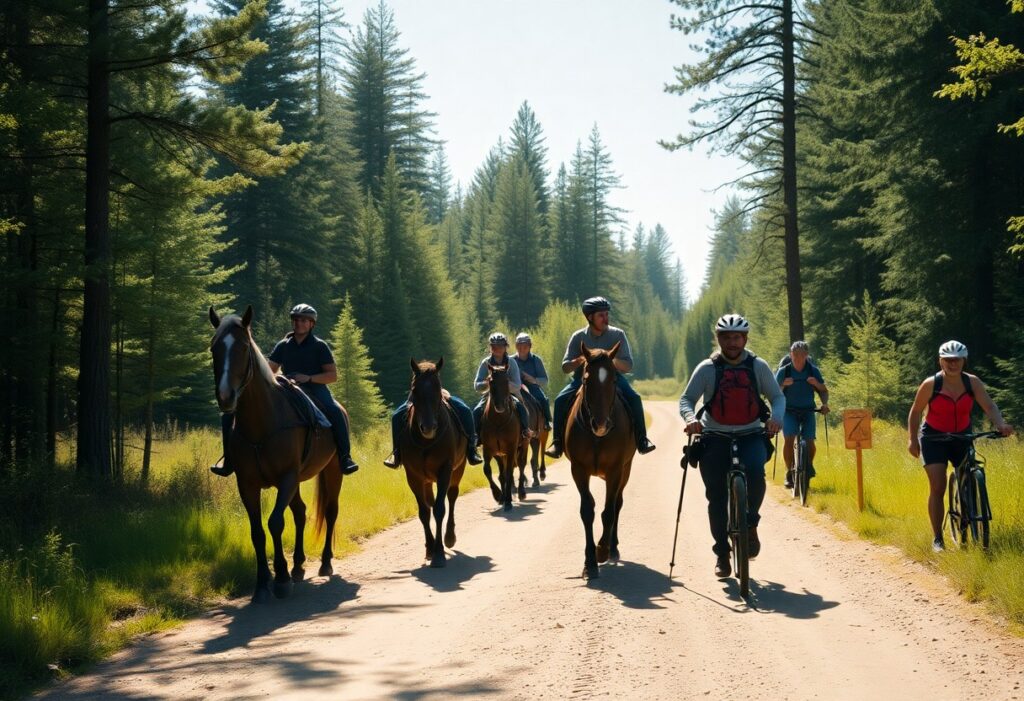With the increasing popularity of outdoor activities, it’s important for you to understand trail riding etiquette to ensure a safe and enjoyable experience for everyone on the trail. Whether you’re riding horses, navigating with a mountain bike, or hiking, following these guidelines will facilitate smoother interactions among all trail users.
First, always be aware of your surroundings. When you encounter other users, it is courteous for you to yield the trail appropriately. Generally, hikers have the right of way over cyclists, and both hikers and cyclists should yield to horseback riders. When passing, slow down and communicate your presence, using phrases like “on your left” or “behind you.” This allows other users to prepare for your approach.
When approaching a group of hikers or cyclists, you should reduce your speed significantly to ensure their comfort and safety. If you’re riding with a group, it’s best to ride in a single file line when meeting other trail users, rather than spreading out, which can cause confusion and obstruction on the path.
Maintaining a safe distance is also important. When passing hikers or cyclists, give them adequate space to avoid startling them. This is especially significant when passing horseback riders, as horses can easily become spooked. A relaxed, calm approach will contribute to a friendly atmosphere on the trail.
Be mindful of noise levels. Keeping your voice and sound to a moderate level demonstrates respect for the quiet enjoyment that many trail-goers seek. Excessive noise can distract wildlife and disrupt the peaceful environment of the natural setting.
On shared paths, avoid creating obstacles. As a trail rider, it’s your responsibility to be aware of the trail conditions. If you must stop for any reason, do so off to the side of the main path to avoid blocking others. Ensure your horse or riding equipment doesn’t impede the trail, as this can create hazards for cyclists and hikers alike.
In the matter of trail maintenance, you can contribute by following the “Leave No Trace” principles. Carry out what you carry in, dispose of waste properly, and stay on designated paths to minimize environmental impact. Respect trail closures and seasonal restrictions; this preserves the integrity of the trail for future users.
Lastly, extend kindness and camaraderie to others. Sharing a smile or a friendly greeting can enhance the experience for everyone. Mutual respect leads to a more pleasurable ride and a supportive community of trail enthusiasts.
| Shared Trail Etiquette |
By adhering to these basic trail riding etiquette guidelines, you play a significant role in fostering a cooperative relationship among hikers, cyclists, and other riders on the path. This promotes a more enjoyable outdoor experience for you and everyone else sharing the trail.











